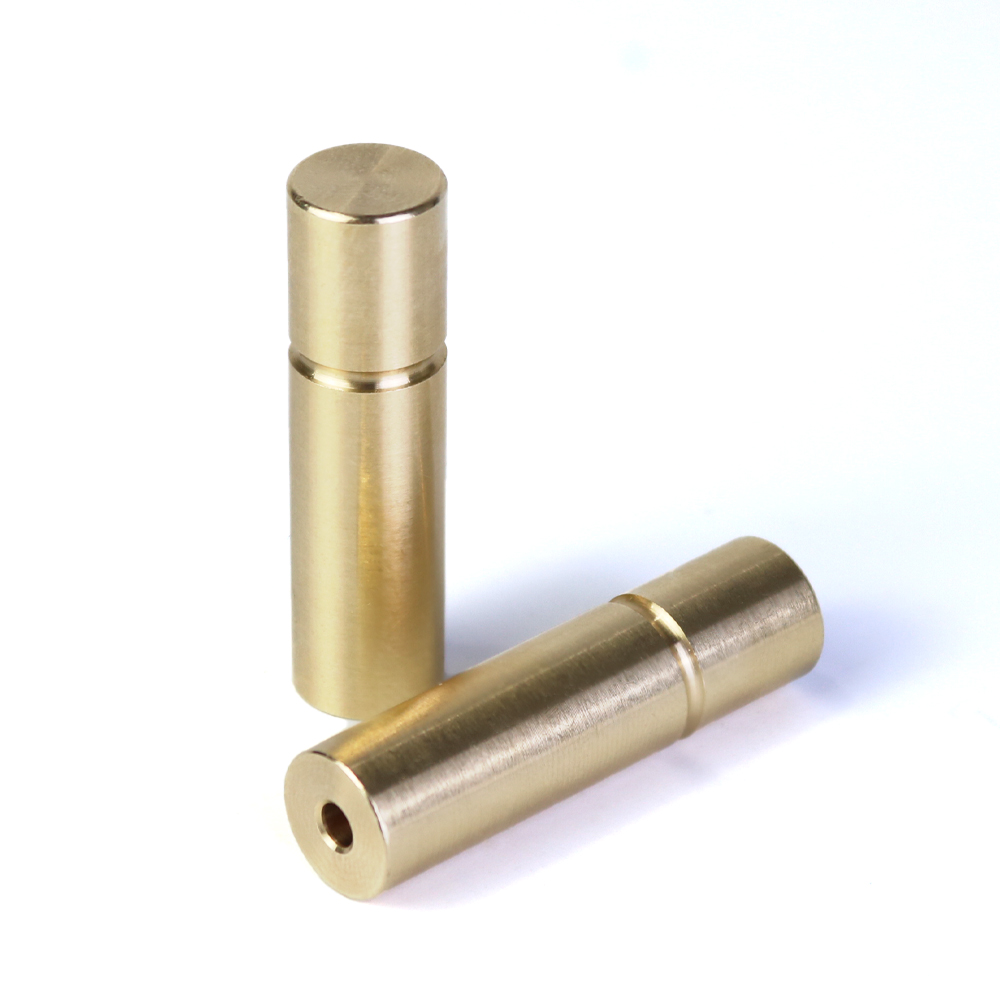اكتشاف الوظائف الأساسية للبرونز: لماذا يستمر هذا السبيكة في القيادة عبر الصناعات

البرونز، سبيكة مختبرة مع الزمن من النحاس والزنك، هو أكثر من مجرد مادة ذات مظهر جذاب. يمتلك لونه الذهبي المميز وخواصه الرائعة مما يجعله عنصرًا لا غنى عنه في مجموعة واسعة من الصناعات. من قطع السيارات إلى الآلات الموسيقية، أنظمة السباكة والقطع الزخرفية، أثبت البرونز أنه مرن للغاية. لكن ما الذي يجعل البرونز مادة مرغوبة للغاية؟ دعونا نلقي نظرة أقرب على الوظائف الرئيسية للبرونز ولماذا تستمر هذه السبيكة في الازدهار عبر مختلف القطاعات.
مقاومة التآكل العالية
إحدى الخصائص البارزة للبرونز هي مقاومته للتآكل. على عكس العديد من المعادن التي تكون عرضة للصدأ والتدهور عند التعرض للرطوبة، فإن البرونز يشكل طبقة واقية تمنع التآكل الإضافي. وهذا يجعله خيارًا ممتازًا للبيئات حيث تكون الأجزاء معرضة للعناصر الخارجية.
- ·المعدات البحرية ومياه البحر: البرونز هو الخيار الأفضل للمعدات البحرية، مثل أجزاء القوارب، الصمامات والمضخات، بسبب قدرته على مقاومة الظروف القاسية لمياه البحر.
- ·أنظمة السباكة: يُستخدم البرونز بشكل شائع في الصنابير، الأجزاء الملحومة والأنابيب، مما يوفر متانة ومقاومة للصدأ والتآكل مع مرور الوقت.
- ·الديكور الخارجي: يمكن للأجهزة الإضاءة الخارجية وزخارف الحدائق المصنوعة من البرونز أن تصمد أمام تحديات التعرض للطقس دون فقدان جاذبيتها الجمالية.
متانة وقوة استثنائية
لدى البرونز مزيج فريد من القوة والمرونة، مما يجعله الخيار المثالي للاستخدامات التي تتطلب كلًا من المتانة والقابلية للتشكيل. وهذا يجعله مفيدًا في المنتجات التي تحتاج إلى تحمل الإجهاد والارتداء الميكانيكي العالي.
- ·مكونات السيارات: يُستخدم البرونز في الأجزاء مثل العجلات، أجزاء الفرامل، الصمامات والمسامير. تضمن متانته بقاء هذه المكونات الحرجة سليمة تحت الاستخدام المستمر.
- ·المachinery الصناعية: في الصناعات مثل التصنيع والبناء، يتم استخدام النحاس الأصفر لصناعة الدب|array|ات، والجوانب، والعواميد بسبب قدرته على تحمل القوى والاحتكاك العالي.
القدرة الكهربائية والحرارية الممتازة
سبب آخر لاستخدام النحاس الأصفر بشكل واسع هو قدرته الكهربائية والحرارية الممتازة. رغم أن النحاس يتفوق على النحاس الأصفر في القدرة، إلا أن النحاس الأصفر لا يزال يقدم كفاءة كافية لمعظم التطبيقات الصناعية. خصائصه الموصلة ضرورية للتطبيقات التي تتطلب تدفقًا كهربائيًا أو نقل الحرارة.
- ·الموصلات الكهربائية والمحابس: يُستخدم النحاس الأصفر بشكل شائع في الموصلات الكهربائية والمحابس لأنه يوفر اتصالات موثوقة ودائمة في مختلف الأجهزة الإلكترونية.
- ·مصدات الحرارة والموصلات: يُستخدم النحاس الأصفر أيضًا في المكونات التي تحتاج إلى نقل الحرارة بكفاءة، مثل الشوايات، ومبدلات الحرارة، ومعدات الطهي.
خصائص مضادة للميكروبات لصحة السلامة
في السنوات الأخيرة، حصلت خصائص مضادة للميكروبات في النحاس الأصفر على اهتمام كبير. يمنع النحاس الأصفر بشكل طبيعي نمو البكتيريا والفيروسات والفطريات، مما يجعله خيارًا آمنًا للاستخدام في التطبيقات التي تتطلب ظروفًا صحية.
- ·المعدات الطبية: يُستخدم النحاس الأصفر في الأدوات الجراحية، ومقابض أبواب المستشفيات، والأجهزة الطبية الأخرى حيث تكون النظافة أمرًا حاسمًا.
- ·معالجة الأغذية: يُستخدم النحاس الأصفر أيضًا بشكل شائع في معدات صناعة الأغذية حيث يجب أن تكون سطوح الاتصال مع الطعام مضادة للميكروبات وسهلة التنظيف.
سهولة التشكيل والتصنيع
النحاس الأصفر هو أحد المعادن الأكثر مرونة وقابلية للسحب المتاحة، مما يجعل من السهل تشكيله إلى أشكال معقدة. هذه الخاصية تتيح للمصنعين إنشاء مكونات دقيقة ومعقدة للغاية دون المساس بالأداء أو المتانة.
- ·الهندسة الدقيقة: يُستخدم النحاس الأصفر على نطاق واسع في التصنيع الدقيق للأجزاء المخصصة مثل العجلات، والمثبتات، والحلي. سهولة معالجته تجعله اختيارًا شائعًا في الصناعات التي تحتاج إلى مكونات صغيرة ودقيقة.
- ·صناعة النماذج الأولية: يُختار النحاس الأصفر غالبًا لتطوير النماذج الأولية السريعة بسبب قابليته للتصنيع، مما يسمح للمصممين بإنشاء نماذج دقيقة بسرعة.
باستخدام النحاس الأصفر، يمكن إنتاج أجزاء مخصصة بدقة عالية وبتكلفة نسبية منخفضة، مما يجعله خيارًا جذابًا للصناعات التي تتطلب التخصيص والمرونة.
الفعالية من حيث التكلفة
يحقق النحاس الأصفر توازنًا بين الأداء والتكلفة، مما يجعله خيارًا أكثر اقتصاداً مقارنة بالمعادن الأخرى مثل النحاس والفولاذ المقاوم للصدأ. وللصناعات التي تحتاج إلى مواد ذات أداء عالٍ ولكنها أيضًا بحاجة إلى السيطرة على التكاليف، فإن النحاس الأصفر غالبًا ما يكون المادة المفضلة.
- ·التصنيع بكميات كبيرة: يُستخدم النحاس الأصفر غالبًا في التصنيع بكميات كبيرة لإنتاج أجزاء السيارات، والإكسسوارات الصحية، والمكونات الكهربائية، لأنه يقدم قيمة ممتازة مقابل المال مع الحفاظ على متانة وأداء رائعين.
- ·أجزاء التعويض: بسبب طول عمره وفعاليته الاقتصادية، يعتبر النحاس الأصفر شائعًا كمادة لأجزاء التعويض التي تحتاج إلى مقاومة الاحتكاك والتجوية.
الاستنتاج: الجاذبية الدائمة للبرونز
من مقاومته للتآكل إلى قوته، وموصلية الحرارة والكهرباء وجودته الجمالية، يعتبر البرونز مادة متعددة الاستخدامات للغاية ولها تطبيقات لا حصر لها عبر الصناعات. قدرته على تقديم فوائد وظيفية وجاذبية بصرية تجعله أداة قيمة للمصنعين والمصممين والمهندسين على حد سواء. سواء تم استخدامه في المachinery الصناعية، أو التصاميم الفاخرة، أو التطبيقات الطبية، يستمر البرونز في لعب دور حيوي في تقدم التكنولوجيا الحديثة، وضمان الأداء وإضافة الجمال للأغراض اليومية.
مع استمرار تطور الصناعات، تضمن الخصائص الفريدة للبرونز بقاءه المادة المفضلة لعدد واسع من التطبيقات، مما يقدم التوازن المثالي بين المتانة، الكفاءة والأناقة.


